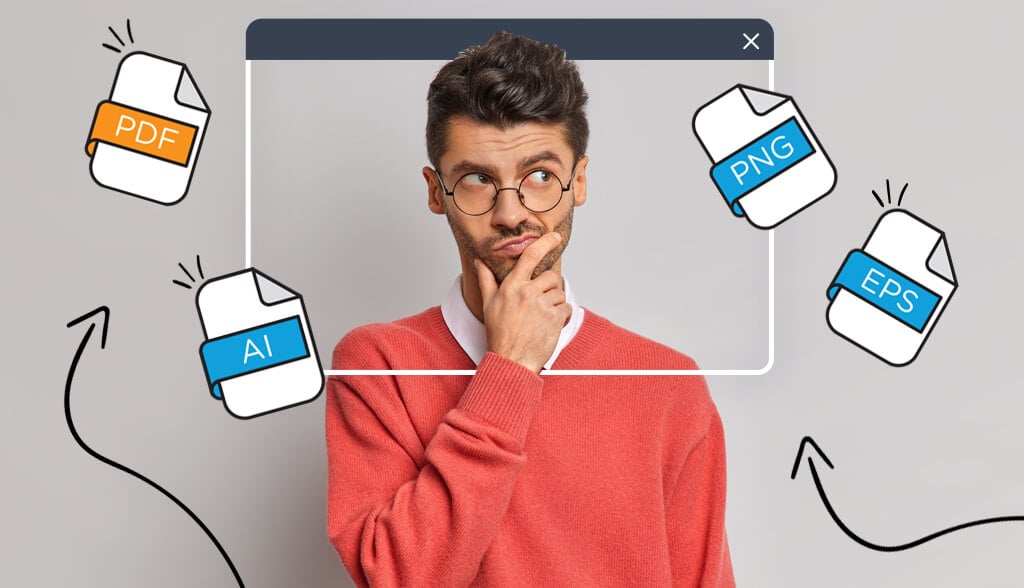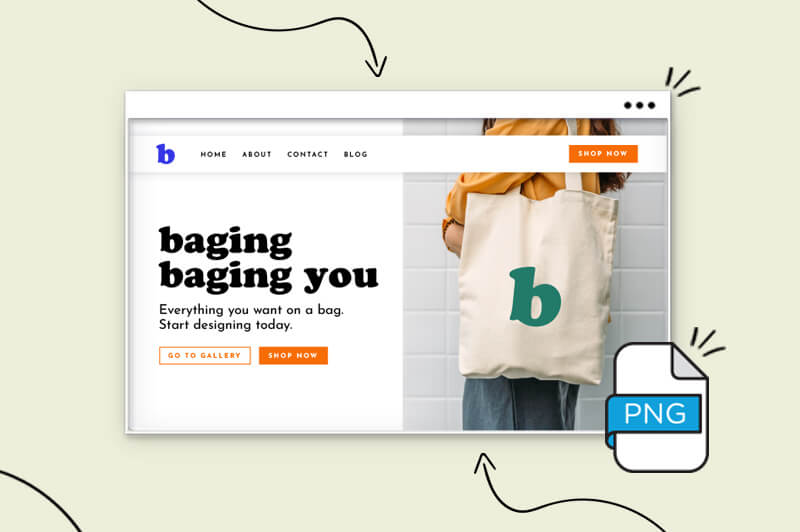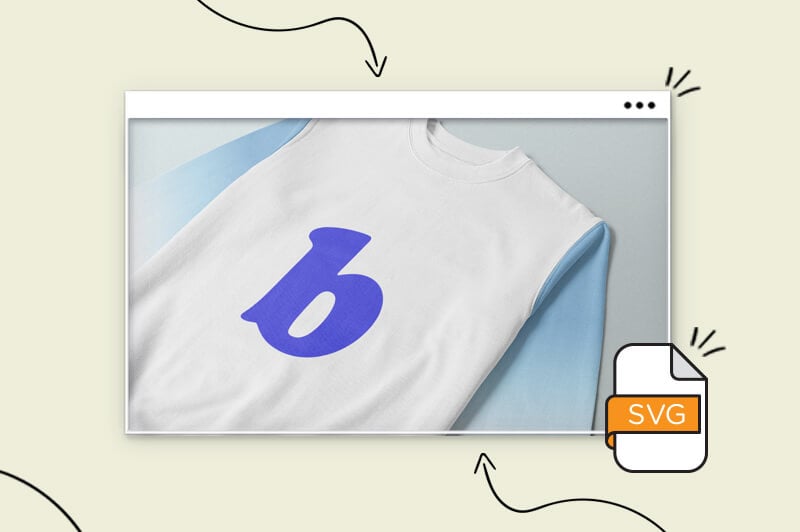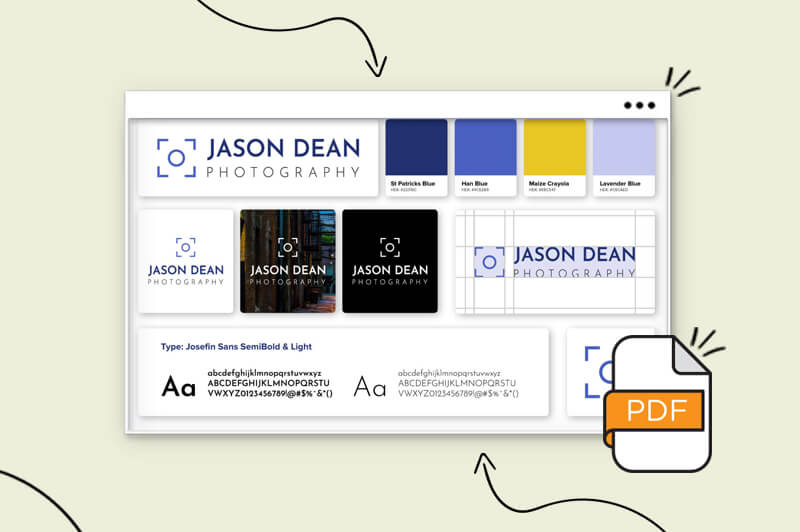
When you create your logo, you’ll receive different kinds of digital files as well. Chances are, you’re wondering what use you’ll ever have for them and why there are so many different formats. It’s definitely confusing, but this article is going to clear up all the confusion.
Each file format is meant to be used for a specific purpose. Whether it’s for a t-shirt, brochure, or Instagram profile picture, choosing the right file is important.
The most common logo file formats are PNG, SVG, EPS, and PDF. This article will tell you what each file format is and what to use them for.

The Portable Network Graphic (PNG) is a raster (pixel-based) image format. PNG file format is ideal for digital graphics, such as logos, icons, text, flat images, etc). If you need a digital image with a transparent background then you must use PNG. If you’re using your logo for any digital purpose like a PowerPoint presentation then you should choose PNG files. However, this file type is not recommended for print and it doesn’t support animation.

A Scalable Vector Graphic (SVG) file is a popular file format for displaying 2-dimensional graphics, charts, and illustrations on the web. SVG files are vector-based that are built from mathematical formulas rather than pixels. Vector files maintain their quality, so you should use them whenever possible. SVG files support animation. It’s especially ideal to use an SVG file format when you print your logo.

EPS is a vector file format that is the industry standard for professional, high-quality printing. EPS is typically used for large-scale detailed images like billboards and large posters.
Note that once you save a file as an EPS, you can no longer edit it. So if you notice any mistakes or want to make any changes, you’ll need to go back to the original design file and then resave the EPS. Also, EPS files require specialized software like Adobe Illustrator to open and view.
Large-scale detailed images like billboards, large posters, and other attention-grabbing marketing materials

PDF stands for Portable Document Format. With this versatile file format, people can easily exchange and present documents regardless of the software, hardware, and operating system they are using. PDF documents can contain links, buttons, audio, and video, and can also be signed electronically. They’re used for printing and editing purposes.
Choosing the right file format depends entirely on how you’d like to use your logo. Let’s do a quick rundown of everything we talked about:
If you’re printing business cards, brochures, clothing, and the like, then you should use SVGs if they’re accepted by the printer you’re using; if not, then use an EPS or PDF file.
The best file format for a transparent background is PNG. If you’re using your logo for any digital purpose, choose PNG files–and go with SVG or EPS files if you’re sending your logo to a designer for tweaks and edits.
Now that you know which file formats to use, you can go ahead and start making your logo!
Products
Resources
@2024 Copyright Tailor Brands